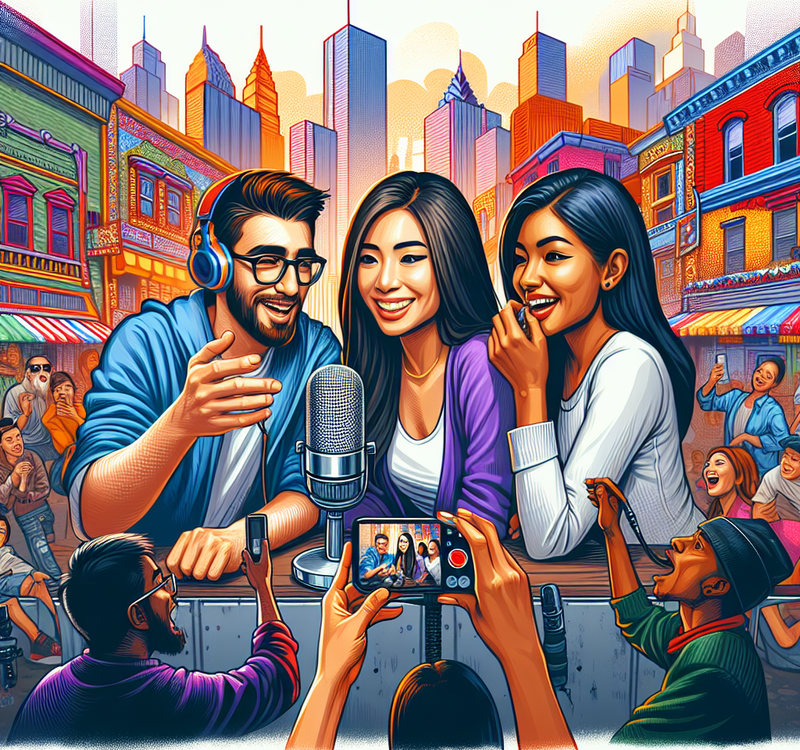
The Power of User-Generated Content (UGC) in Influencer Marketing
18 December، 2023
Unmasking Influencers: Ensuring Credibility and Validity in the Digital World
27 January، 2024After the Famous or Influencer Campaign, What Should I Do?

Title: After the Famous or Influencer Campaign, What Should I Do?
SEO Meta-Description: Learn how to manage, measure, and optimize your influencer campaign for maximum success. Discover the best practices, influencer marketing examples, and strategies to ensure long-lasting results. Find out how Araboost can streamline your influencer marketing efforts in the MENA region.
Introduction:
In today’s digital age, influencer marketing has become an essential tool for businesses looking to reach their target audience effectively. Collaborating with influencers allows brands to leverage their credibility, reach, and engagement to drive sales and increase brand awareness. However, after the initial campaign phase, many businesses struggle with what steps to take next. In this article, we will explore the key aspects of managing an influencer campaign, evaluating its success, and implementing a post-campaign strategy.
How do you manage an influencer campaign?
Running a successful influencer campaign requires careful planning and execution. Here are some essential steps to manage your influencer campaign effectively:
Set clear campaign objectives
Before diving into any influencer campaign, it’s crucial to define your goals and objectives. Are you looking to boost brand awareness, increase sales, or drive website traffic? Setting clear objectives will help you align your campaign strategies with your broader marketing goals.
Identify the right influencers
Choosing the right influencers is crucial to the success of your campaign. Look for influencers who align with your brand values, have an engaged audience, and can create authentic content. Utilize Araboost, a cutting-edge influencer marketing platform designed for the MENA region, to automate the influencer selection process.
Develop a comprehensive brief
To ensure that influencers accurately represent your brand, provide them with a detailed campaign brief. Outline the goals, key messages, brand guidelines, and any other relevant information. Create a collaborative partnership with influencers to maximize campaign performance.
Monitor and measure campaign performance
Regularly monitor and evaluate the performance of your influencer campaign. Use tracking tools and analytics to measure reach, engagement, conversions, and return on investment. Araboost’s campaign management feature can help streamline this process by providing real-time performance metrics.
How does an influencer campaign work?
Understanding the mechanics of an influencer campaign is crucial for its success. Here’s a breakdown of how an influencer campaign typically works:
Partnering with influencers
The first step is to identify and collaborate with influencers who align with your brand and target audience. Establish a clear agreement regarding deliverables, compensation, and timeline. With Araboost, you can easily connect with influencers and streamline the negotiation process.
Content creation and sharing
Once the partnership is established, influencers will create content that showcases your product or service. This can include sponsored posts, videos, reviews, or giveaways. Influencers will then share this content with their followers across various social media platforms.
Amplification and engagement
As influencers share the content, their followers will engage with it through likes, comments, and shares. This creates a ripple effect, expanding the reach of your brand message and driving traffic to your website or landing page. Encourage influencers to actively engage with their audience to foster a sense of authenticity.
Performance evaluation
After the campaign, it’s essential to evaluate its performance. Monitor key metrics such as reach, engagement, and conversions to measure the impact of the influencer campaign. Araboost offers advanced performance estimation tools to help you assess the success of your campaign accurately.
How long should an influencer campaign last?
Determining the duration of an influencer campaign depends on various factors, including your objectives and budget. However, it’s generally recommended to run campaigns for at least one to three months to allow enough time for the content to resonate with the audience. Longer campaigns enable a deeper connection between the influencers and their followers, resulting in more substantial brand impact.
How do you know if an influencer campaign is successful?
Evaluating the success of your influencer campaign is vital to understanding its impact and improving future campaigns. Here are some key indicators of a successful influencer campaign:
Increased brand awareness
If your campaign successfully increases brand visibility, you’ll notice higher social media reach, brand mentions, and hashtag usage. Monitor these metrics to gauge the campaign’s impact on brand awareness.
Engagement and interaction
Successful campaigns generate high levels of engagement, such as likes, comments, shares, and video views. Analyze these metrics to determine if your campaign resonated with the audience and created a buzz that generated meaningful interactions.
Conversion rate and sales
Ultimately, the success of an influencer campaign can be measured by its impact on conversions and sales. Track the number of conversions and monitor website traffic to evaluate the campaign’s effectiveness in driving sales.
Influencer marketing examples and strategies
To understand the power of influencer marketing better, let’s explore some successful influencer marketing examples and strategies:
Case study: Sample Brand X and Influencer Y
Sample Brand X collaborated with Influencer Y to promote their new line of skincare products. Influencer Y created engaging content featuring the products, sharing their personal skincare routine, and showing visible results. The campaign successfully increased brand awareness and drove significant sales for Sample Brand X.
Strategy: Micro-influencers for niche targeting
Micro-influencers, with a smaller but highly engaged following, can be an excellent strategy for reaching niche target audiences. Identify influencers who have a loyal fan base within your industry and collaborate with them to generate authentic content.
Strategy: User-generated content campaigns
Harness the power of user-generated content by encouraging your audience to create and share content related to your brand or products. Offer incentives such as giveaways or contests to motivate users to participate. This strategy fosters brand advocacy and increases reach through organic content creation.
Should influencers be allowed to market products?
The ethical implications of influencer marketing have sparked debates within the industry. Some argue that influencers should not be allowed to market products, citing potential conflicts of interest or misleading practices. However, when done transparently and authentically, influencer marketing can be a valuable tool for brands to connect with their target audience.
The best influencer in the world
While it’s challenging to determine the “best” influencer globally, many notable influencers have made a significant impact in the industry. Some popular influencers include Kylie Jenner, PewDiePie, Huda Kattan, and Gary Vaynerchuk. These individuals have amassed massive followings and have successfully built personal brands that resonate with their audiences.
Free influencer search tool
Finding the right influencers for your campaign can be a daunting task. Utilize Araboost’s free influencer search tool to simplify the process. Araboost’s comprehensive database allows you to search for influencers based on location, industry, engagement rates, and more. Discover the perfect influencers to amplify your brand message.
After the Famous or Influencer Campaign, What Should I Do?
After running a successful influencer campaign, it’s crucial to leverage the momentum and ensure long-term results. Here are some steps to take after your campaign’s completion:
Analyze campaign metrics and evaluate performance
Review the metrics gathered during the campaign duration. Analyze reach, engagement, conversions, and sales to understand the campaign’s impact and identify areas for improvement.
Continue brand collaborations with influencers
Maintain ongoing relationships with influencers who performed well during the campaign. Collaborate on future content, product launches, or industry events to nurture a lasting connection with their audience.
Repurpose influencer-generated content
Leverage the content created by influencers during the campaign. Repurpose it for social media posts, website blogs, or email newsletters. This not only extends the lifespan of the campaign but also provides consistent messaging across multiple channels.
Implement user-generated content strategies
Encourage your audience to create and share content related to your brand or products. By leveraging user-generated content, you foster brand advocacy and maintain an engaged community.
Monitor industry trends and adjust strategies
Stay up-to-date with the evolving influencer marketing landscape. Monitor industry trends and adapt your strategies accordingly to ensure continued success.
Conclusion:
Running a successful influencer campaign is only the beginning of your brand’s influencer marketing journey. By effectively managing and analyzing your campaign, collaborating with the right influencers, and implementing post-campaign strategies, you can ensure lasting results. Streamline your influencer marketing efforts in the MENA region with Araboost, a cutting-edge influencer marketing platform designed to maximize your campaign’s impact. Take advantage of the platform’s automated influencer selection, campaign management, and performance estimation features.
FAQs:
1. How can I measure the success of my influencer campaign?
2. Is it necessary to work with high-profile influencers?
3. How can I find influencers relevant to my target audience?
4. What are the best practices for briefing influencers?
5. How can I encourage user-generated content from my audience?



